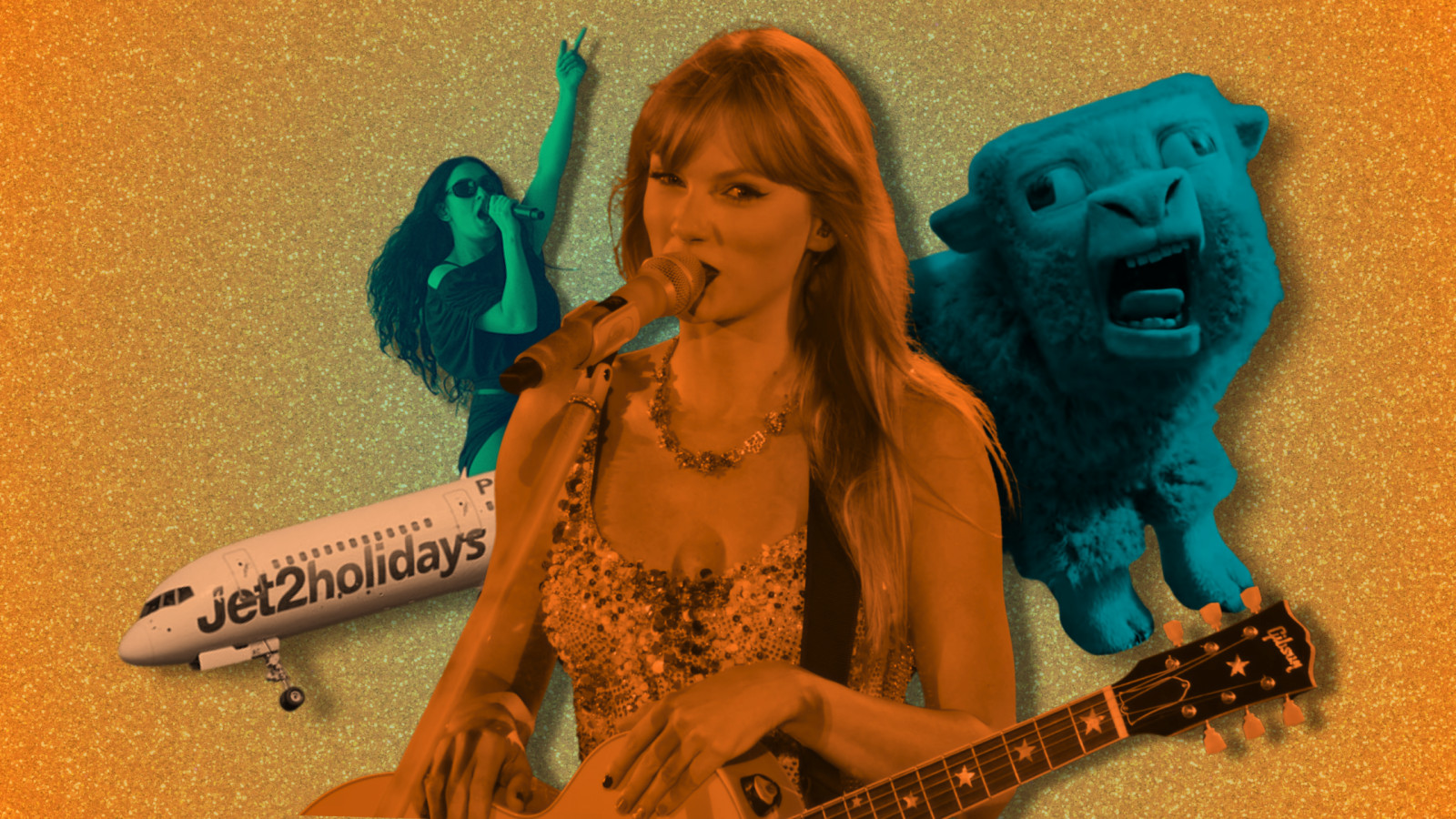The life of a cultural narrative: Where are 2025’s iconic moments?


Eras are defined by their moments. The 2000’s saw low-rise jeans, a neon palette, and pop star drama. The 2010’s had barn weddings and ‘Gangnam Style’. With time comes the benefit of hindsight, and clarity on what was big versus what faded quickly. Yet all those who lived through those moments would be able to point to certain collective cornerstones.
As we have passed the halfway point of the 2020s, the effects of digital decentralisation have become more evident. The upside: more content than ever, and deep, niche scenes to engage in. The downside: very few mainstream moments that define the era for everyone. Or at least, very few palatable ones.
The new branding package
Historically, entertainment could go big by tapping into a broader cultural narrative and iterating at the forefront. Justin Bieber and One Direction were of the same era of boy-band craze, with My Chemical Romance and Fall Out Boy their edgy alternatives. Taylor Swift made her debut in country music, in the same wave of Americana that saw The Lumineers, Mumford and Sons, and Edward Sharpe and the Magnetic Zeros dominate the airwaves. The scenes were huge and contributed to by fashion trends (flannel shirts), films (Twilight), and home décor (fairy lights everywhere).
The 2020’s, in contrast, have been heavily impacted by scene fragmentation, powered by personalised algorithmic discovery. There is also a wariness around the moments that have truly dominated the era, namely the pandemic, and a slew of economic and geopolitical shifts.
Big cultural moments have been able to break through, but not without a huge effort by marketing teams to create the full package. The Barbie movie came with its own colour palette, an on-trend soundtrack, popular actors from across genres, and an undertone of political messaging, as well as a rival in the form of Oppenheimer. In addition, it had fan participation, from costumes for audiences to imitate, to viral memes and participation in the rivalry. Brat, Short n’ Sweet, and The Rise and Fall of a Midwest Princess shot their artists to fame last year, arguably dominating the summer. Yet each did so with a clear colour brand, fashion aesthetic, mood, and message that seemingly created mainstream culture from scratch. Rather than having a well-developed mainstream culture to tap into, these moments had to do a lot of the legwork themselves.
Featured Report
India market focus A fandom and AI-forward online population
Online Indian consumers are expected to be early movers. They are high entertainment consumers, AI enthusiasts, and high spenders – especially on fandom. This report explores a population that is an early adopter, format-agnostic, mobile-first audience, with huge growth potential.
Find out more…A cultural messy era
There has been much discussion in marketing circles about how little there is to work with so far in 2025. There is no Brat Green or Barbie Pink to cloak ads in. The broad consensus is that the ‘sound of the summer’ is Jess Glynne’s ‘Hold My Hand’ accompanied by the Jet2holidays voiceover. The biggest films have been Superman (yet another remake) and A Minecraft Movie.
Perhaps this is why Taylor Swift’s upcoming album, The Life of a Showgirl, is such a boon. Cast in teal and glittering orange, it has quickly become a rallying call for advertisers in what has otherwise been a vacuum of conflicting cultural messages. Free marketing for the new album; free clout for the brands looking to capitalise on the work she has done over the years to wield such cultural heft.
That being said, it is one thing for the big leagues trading in colour schemes and marketing packages looking for popular trends to jump on. It is another for the audiences living their lives day-to-day.
The Jet2holidays remix has taken off as a backdrop to travel fails on social media – a mixture of the unhinged and aspirational (don’t we all perpetually need a holiday). Brat and The Rise and Fall of a Midwest Princess both tap into this sense of mess, chaos, and personal uncertainty. Sabrina Carpenter’s upcoming Man’s Best Friend’s imagery follows this same trend. Even A Minecraft Movie, featuring Jack Black, Jennifer Coolidge, and Jason Momoa – whose own brands all walk the line between absurd and profound – centres around the conflict of escaping into a world you can control, and ultimately choosing to re-enter the real, much messier one.
Mainstream culture in 2025 exists – but not in an easy-to-package, brand-friendly way (unless you’re Coinbase). As a result, we have semi-subversive messaging in off-piste places, while major players scramble for colour swatches and perfect soundbites. In short, it’s not just the algorithms to blame for niche scenes taking over, and no rallying cries to define our era. It is because the real defining moments of the 2020s that underpin its culture are almost impossible for big institutions to tap into without undermining their bottom lines.
In an era of uncertainty, messaging requires taking stances. In a dynamic of almost instant commodification, lasting authenticity means lip service can’t just be paid on a campaign-by-campaign basis. Niche means finding fans, but it can also run the risk of creating enemies. Walking the tightrope of mainstream, on the other hand, is likely to water down messaging and create apathy. To be successful, brands must tap into the right niche scenes consistently, and contribute with their own voices, because riding the coattails of mainstream culture just isn’t the go-to-market strategy it used to be.
Image credits: Russell Lee, CC BY 2.0, via Wikimedia Commons / Setoxxx, CC BY-SA 4.0, via Wikimedia Commons / Taylor Swift via YouTube / Warner Bros. Pictures

The discussion around this post has not yet got started, be the first to add an opinion.